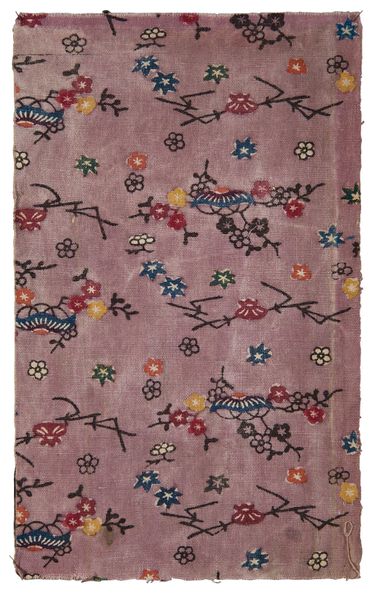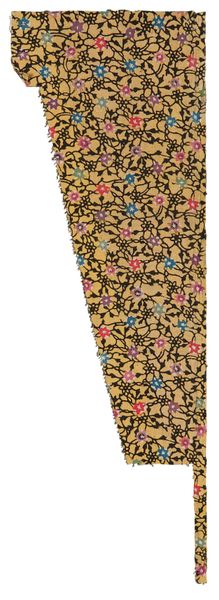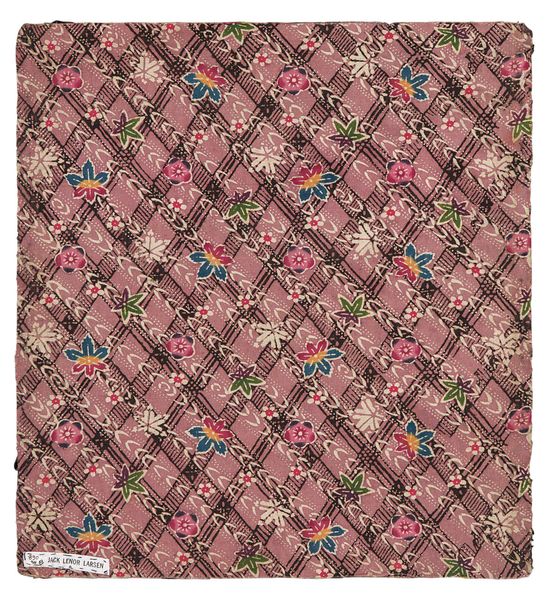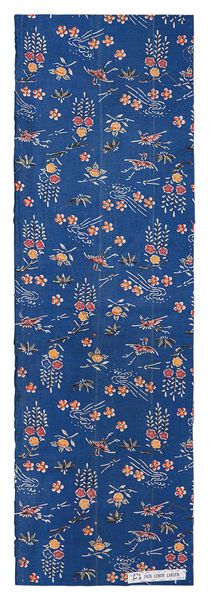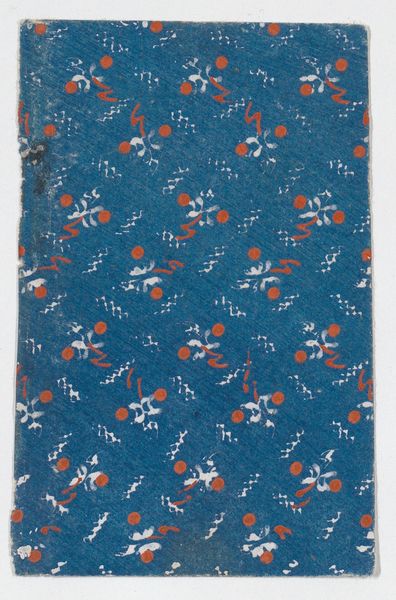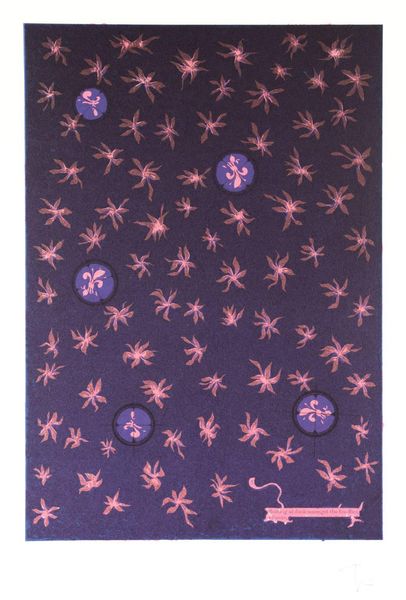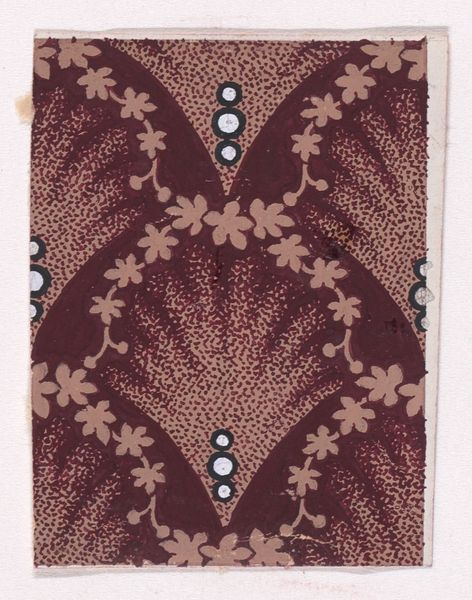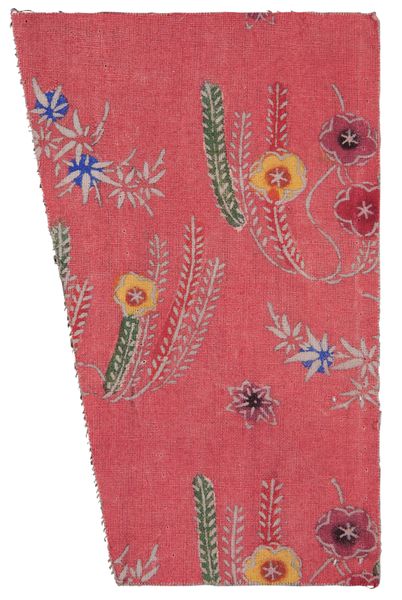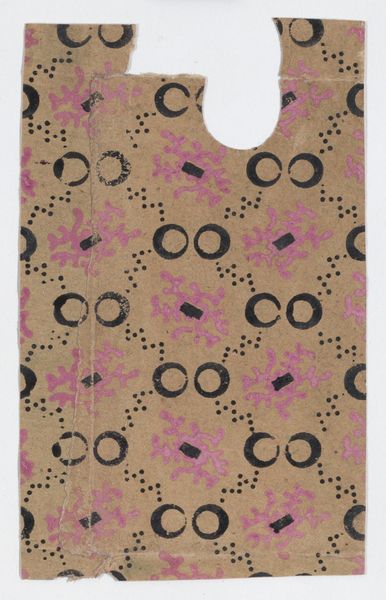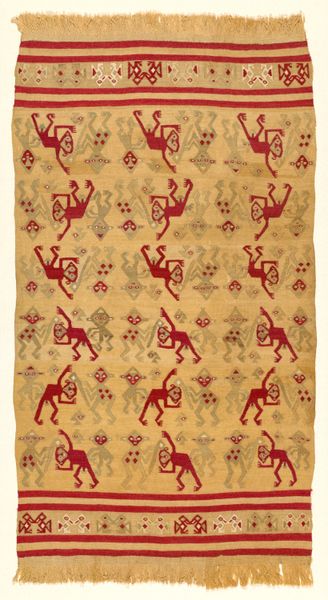
Pink-ground fragment with motif of plovers and plums c. 19th century
0:00
0:00
textile
#
naturalistic pattern
#
organic
#
asian-art
#
textile
#
japan
#
organic pattern
#
orientalism
Dimensions: 33 × 7 3/8 in. (83.82 × 18.73 cm) (overall)
Copyright: Public Domain
Curator: This is a textile fragment dating back to the 19th century, charmingly titled "Pink-ground fragment with motif of plovers and plums." It resides here at the Minneapolis Institute of Art. Editor: Immediately, I feel a sense of delicacy and fleeting beauty. The pink is like a memory fading at the edges, and those scattered motifs—are they plums and birds?—give it a lyrical, almost melancholic air. Curator: The textile offers a glimpse into the sophisticated artistry of Japanese design. It seems like this kind of meticulous patterning, with its gentle color palette, was commonly used in clothing or interior décor during the era. Editor: The color itself—this faded pink—makes me think about how gender and textiles often get tied together in dismissive ways. Is this "just" a pretty fragment? Or does it encode deeper societal expectations about the feminine, domestic, or the ephemeral? How can we reclaim textile art from under the weight of patriarchal dismissal, you know? Curator: Good point! Perhaps the fragility that strikes you reflects the precarious social status assigned to certain forms of artistic expression. At first glance I was taken with the dynamic, repeating patterns. I'm quite fond of the dark silhouettes, the birds maybe. It’s so well balanced, an overall rhythm of lightness and depth. Editor: Balance is so critical, here. How are we balancing environmental considerations alongside the legacies of colonialism embedded in museum acquisition? We can question access, ownership, and interpretation—who gets to speak for these objects? Curator: What I really see here is a reverence for nature. Birds, blooms…it whispers of gardens and breezes and all the beauty found in those little details. Editor: Definitely! A gentle resistance lies in the quiet observation and subtle symbolism, I imagine. To record the daily lives, as some kind of activism. Curator: Considering it all, I'm feeling even more fascinated now than before. The history of a textile is interwoven so deeply into social history, just like you pointed out. Editor: Yes! Exactly that interwoven-ness… these motifs ripple outward into all kinds of discourse and ideas.
Comments
No comments
Be the first to comment and join the conversation on the ultimate creative platform.
